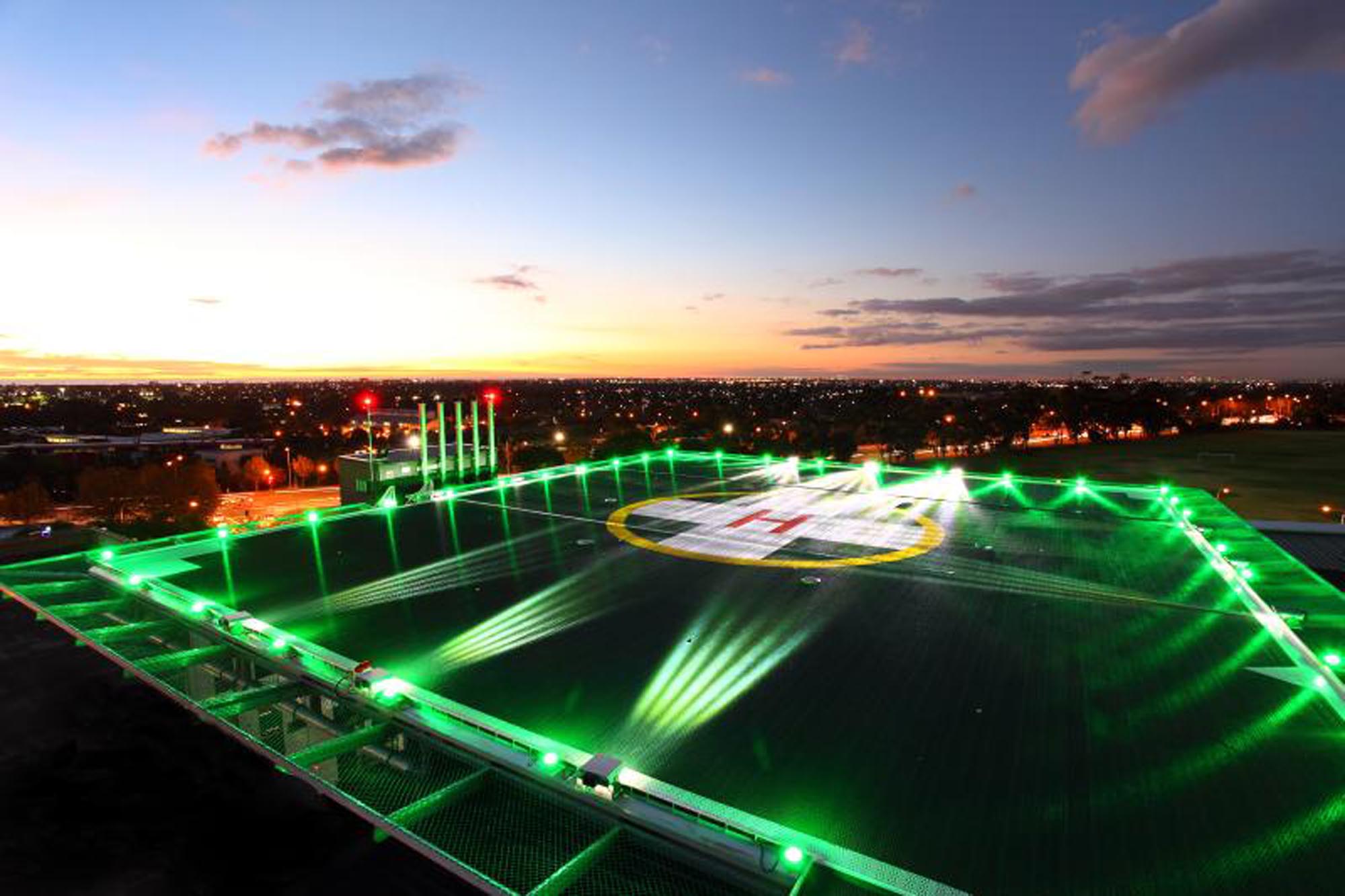Helicopter Landing Pad Requirements

Each Heliport Deck requires a safety fence or shelf at least five feet wide (measured horizontally) around the heliport deck’s perimeter. The barrier should extend around the stairways parallel to the heliport’s outer perimeter. Also, the barrier is to be attached slightly below the flight deck and inclined to the outer edge.
The outer barrier or safety fence edge also must not protrude above the level of the deck and should be designed to support a minimum of 200 pounds of concentrated loads at any given point.
ID Markings: ID Markings are made on top of helipads, usually marked with a circle and a large “H”, to allow helicopters to see where they are landing from high up in the air.
Tie Downs: A minimum of four tie-downs should be provided to secure each helicopter to the heliport deck. The Tie-Down points should be recessed below the landing surface where practical. The Tie-Down points should be of sufficient strength and construction suitable to secure the largest helicopter to be accommodated at the facility.
Obstacles Markings: Red lights shall be installed at suitable locations to provide the Pilot with visual information on the proximity and height of objects that exceed the height of the landing area. This requirement also applies to Cranes.
Landing & Walkway Lighting: The landing area is marked with Green or alternate yellow and blue lights. It is important that all light bulbs work properly at all times. Walkways and ladder lights are to be installed to illuminate path or access ladders for safety reasons.
Flood Lighting: The landing area is to be floodlight for night use. The lights must be arranged so not to blind the pilot upon landing the air craft. They shall be switched on or off ONLY at the request of the pilot
